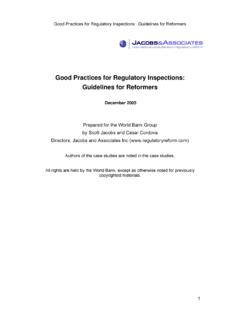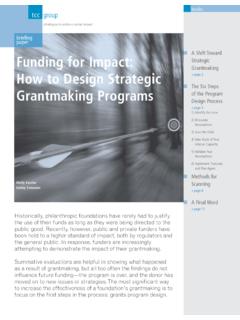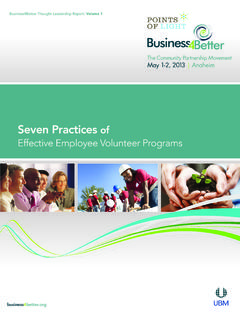Transcription of Strategy and Action Plan for Capacity Development …
1 Strategy and Action Plan for Capacity Development in support of the implementation of the Great Green Wall for the Sahara and Sahel Initiative Draft Document Version 15 June 2013. for comments GGWSSI - Strat gie R gionale de Renforcement des Capacit s V8 Page 2. Acronyms and abbreviations AfDB African Development Bank AMCEN African Ministerial Conference on the Environment ANCR Self-Assessment of National Capacity Building Requirements Project APEFE Association for the Promotion of Education and Training Abroad (Belgium). APGMV Pan-African Agency of the Great Green Wall AUC African Union Commission CAADP Comprehensive Africa Agriculture Development Programme CARI Centre d'Actions et de R alisations Internationales CILSS Interstate Committee for Drought Control in the Sahel (Ouagadougou). CNSF Centre National de Semences Foresti res (National Forest Seed Centre).
2 (Ouagadougou). COMESA Common Market for Eastern and Southern Africa ECREEE ECOWAS Centre for Renewable Energy and Energy Efficiency ECA United Nations Economic Commission for Africa ECOWAS Economic Community of West African States EU European Union FAO Food and Agriculture Organization of the United Nations GEF Global Environment Facility GGWSSI Great Green Wall for the Sahara and Sahel Initiative IAASTD International Assessment of Agricultural Knowledge, Science and Technology for Development (UNEP). ICRAF World Agroforestry Centre ICT Information and communication technology IIEP International Institute for Educational Planning (UNESCO). IFAD International Fund for Agricultural Development ISDR International Strategy for Disaster Reduction LADA Land Degradation Assessment for Dryland Areas MDG Millennium Development Goal NAP National Action plan NAPCD National Action Plan to Combat Desertification NEPAD New Partnership for Africa's Development NAPE National Action Plan for the Environment NGO Non-governmental organization NPCA NEPAD's Planning and Coordination Agency OSS Sahara and Sahel Observatory PAFO Pan African Farmers' Organization PES Payments for environmental services R SAD R seau Sahel D sertification (NGO Burkina Faso, France, Mali, Niger).
3 GGWSSI - Strat gie R gionale de Renforcement des Capacit s V8 Page 3. SAFGRAD Semi-Arid Food Grains Research and Development project (AUC). SAWAP Sahel and West Africa Programme (GEF/WB). SLM Sustainable Land Management UNCBD United Nations Convention on Biological Diversity UNCCD United Nations Convention to Combat Desertification UNDP United Nations Development Programme UNEP United Nations Environment Programme UNESCO United Nations Educational, Scientific and Cultural Organization UNFCCC United Nations Framework Convention on Climate Change WB World Bank WOCAT World Overview of Conservation Approaches and Technologies GGWSSI - Strat gie R gionale de Renforcement des Capacit s V8 Page 4. GGWSSI - Strat gie R gionale de Renforcement des Capacit s V8 Page 5. Contents Acronyms and abbreviations _____ 2. Contents _____ 5.
4 Executive Summary _____ 6. INTRODUCTION _____ 8. METHODOLOGY _____ 10. Analysis _____ 14. Current framework for the implementation of the GGWSSI _____ 14. The harmonized Strategy _____ 15. National Action plans _____ 16. Great Green Wall Platform _____ 16. Background _____ 16. Objectives and vision _____ 17. Capacity Development _____ 18. The management mechanism _____ 18. Issues that emerged from the analysis of the partner countries concerning the platform _____ 18. Cross-cutting issues emerging from country analyses _____ 19. Opportunities and issues identified in the programmes with similar themes _____ 20. Guidelines for building resilient forest landscapes in drylands _____ 20. Sustainable Land Management (SLM) Programme _____ 21. African Capacity Building Foundation (ACBF) _____ 22. Land governance: the framework and the guidelines on land policies in Africa _____ 24.
5 Regional Centre for Renewable Energy and Energy Efficiency _____ 24. Summary of needs analysis _____ 25. Strategic aspects _____ 25. Organizational aspects _____ 25. Ecological and environmental context _____ 26. Technical context _____ 26. Social and demographic context _____ 26. Economic climate _____ 26. Political context_____ 26. Legal and institutional context _____ 27. Problem tree _____ 28. The categories of the GGWSSI Stakeholders and Capacity Development needs _____ 29. Vision and strategic objectives_____ 33. Global vision and Objective of the Capacity Development stratregy and Action plan in support of the GGWSSI (CD/GGW)_____ 33. The Great Green Wall of the Sahara and Sahel Initiative (GGWSSI) Vision _____ 33. Strategic objectives _____ 34. Bibliography _____ 41. Web sources _____ 41. References_____ 41.
6 GGWSSI - Strat gie R gionale de Renforcement des Capacit s V8 Page 6. Executive Summary A number of actions are planned for the implementation of the Great Green Wall for the Sahara and the Sahel Initiative (GGWSSI): Defining a harmonized regional Strategy ;. Developing and implementing national Action plans (NAPs) for partner countries covered by the GGWSSI. Currently, ten countries1 have validated their plans, four others2 are preparing their plan and are about to have it validated; the African Union Commission (AUC) plans to support the other remaining GGWSSI partner countries in order to develop their Great Green Wall national Action plans;. formulating a project portfolio in the partner countries including transboundary projects and transnational projects of common interest ;. Developing a partnership platform for resource mobilization, sharing knowledge and good practices , as well as enhancing the visibility of the Initiative.
7 Formulating and applying a Capacity Development Strategy and Action plan in support of the implementation of the Great Green Wall (CD/GGW). Coherence between the actions must be assured while maximizing synergies: The Capacity Development Strategy and Action plan (CD/GGW) in support to the GGWSSI, is based on the GGW NAPs and various studies or programmes carried out at the continental or regional level. The CD/GGW is integrated into the partnership platform approach being developed and extends its regional Action or precedes it at the local and national levels. Stakeholders involved in the implementation of the GGWSSI are at 4 levels: local, national, regional and international. All these levels are taken into account in the Capacity Development while privileging local actors and, to a certain extent, national ones.
8 Capacity Development at the regional level aims to consolidate national or local actions by establishing synergies between actors and between countries, in particular: by strengthening at the regional or international levels actions that are similar to those proposed at the national level (mainstreaming);. by responding to specific national or local needs starting from well-developed good practices in specific countries (benchmarking);. by promoting the sharing of experiences and the dissemination of best practices between partner countries (capitalization). These actions will be implemented through information sharing, training, study visits, workshops and demonstration activities, among others. 1. Burkina Faso, Djibouti, Ethiopia, Eritrea, The Gambia, Mali, Niger, Nigeria, Senegal, Chad. 2. Algeria, Egypt, Mauritania and Sudan.
9 GGWSSI - Strat gie R gionale de Renforcement des Capacit s V8 Page 7. Thus, the 2020 vision for CD/GGW affirms that: good practices will be disseminated and adapted under different conditions and widely used; innovations will be integrated into the sectoral and cross-cutting policies; and efforts and achievements made in the implementation of Great Green Wall for the Sahara and Sahel Initiative (GGWSSI) will be widely known and adopted by the concerned rural communities, as well as by technicians and decision makers. The CD/GGW vision is embedded within the overall objective of the GGWSSI, as stated in the GGWSSI harmonized Strategy is to: improve the resilience of the human and natural systems in areas of the Sahel and the Saharaareas to climate change through sound ecosystem management, and sustainable Development of land resources (water, soil, vegetation, fauna, flora), protection of tangible and intangible rural heritage, the Development of rural production and sustainable Development hubs, and the improvement of living conditions and livelihoods of people living in these areas.
10 The vision is reflected in three strategic objectives and four operational objectives: The strategic objectives are: 1. Strengthen technical and scientific competencies of stakeholders involved in the planning, implementation, monitoring and evaluation of the GGWSSI. 2. Strengthen multi-sectoral and multi-stakeholder coordination at the local, national and regional levels for an effective implementation of the GGWSSI. 3. Improve the policy, legislative and resource mobilization framework at all levels in support of the GGWSSI. The operational objectives are: 1. Facilitate the formulation, implementation and evaluation of local Development plans . as a contribution to GGW national Action plans supporting the improvement of people livelihoods and resilience of human and natural systems in GGWSSI. intervention areas 2.

















